on a small variety tomato grown from seed under greenhouse conditions.
This
trial,
started in
August 2007, examines the effects of Sea-Crop on seed germination and
early
growth and the later incorporation of molasses fertilizer mixed with
Sea-Crop
as opposed to a molasses only control group on Micro Tom variety tomato.
The
advantages
of the Micro
Tom include its small size, ability to grow to fruition in a small 4”
pot, and
its ability to grow in lower light sources. The main problem of the
Micro Tom
is that unlike other varieties of tomato it is very susceptible to
aphid
attack.
On
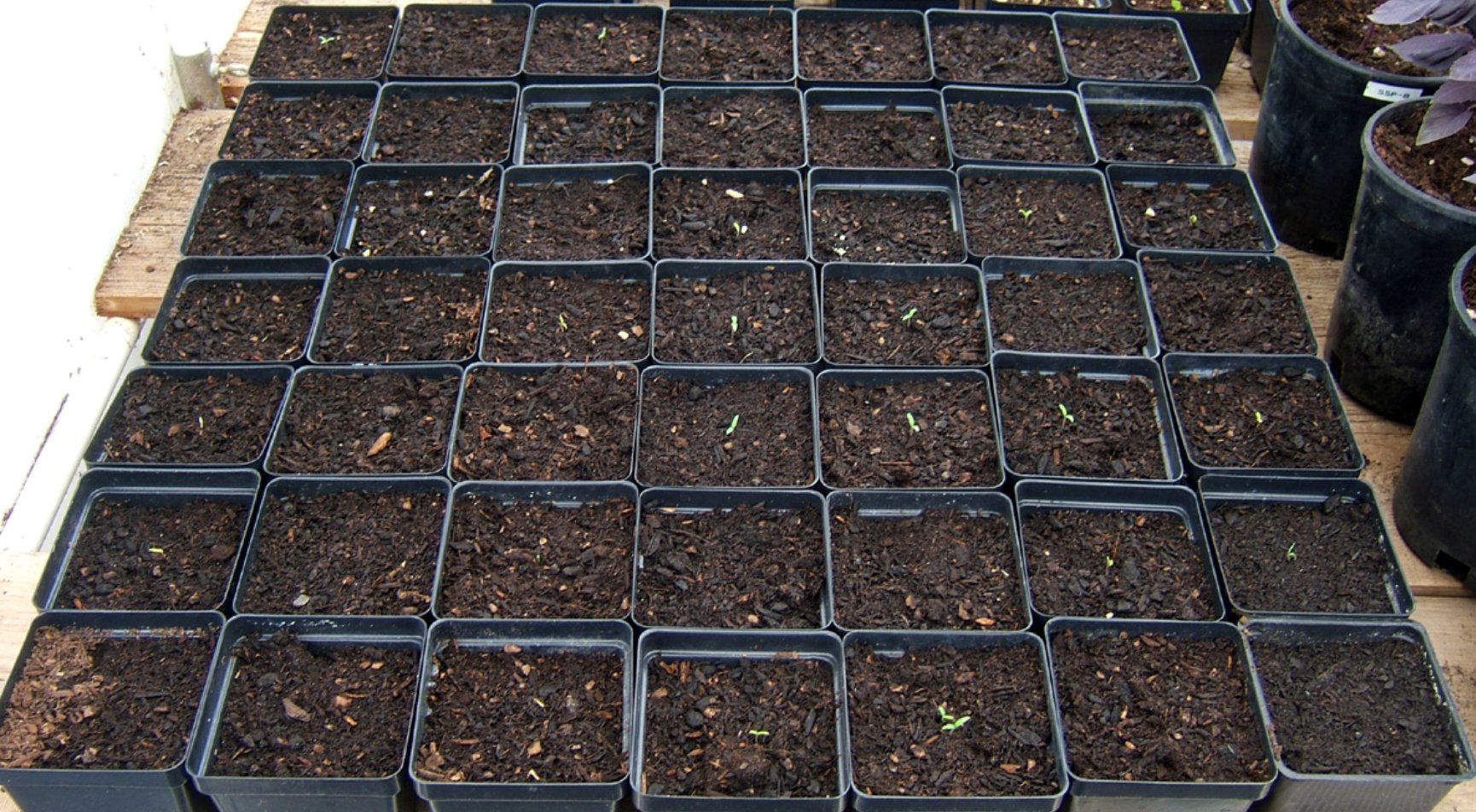
This photo was taken eight
days (on
on the seed
germination and early growth of the Micro Tom tomato plants.
Three
weeks
after planting (
On
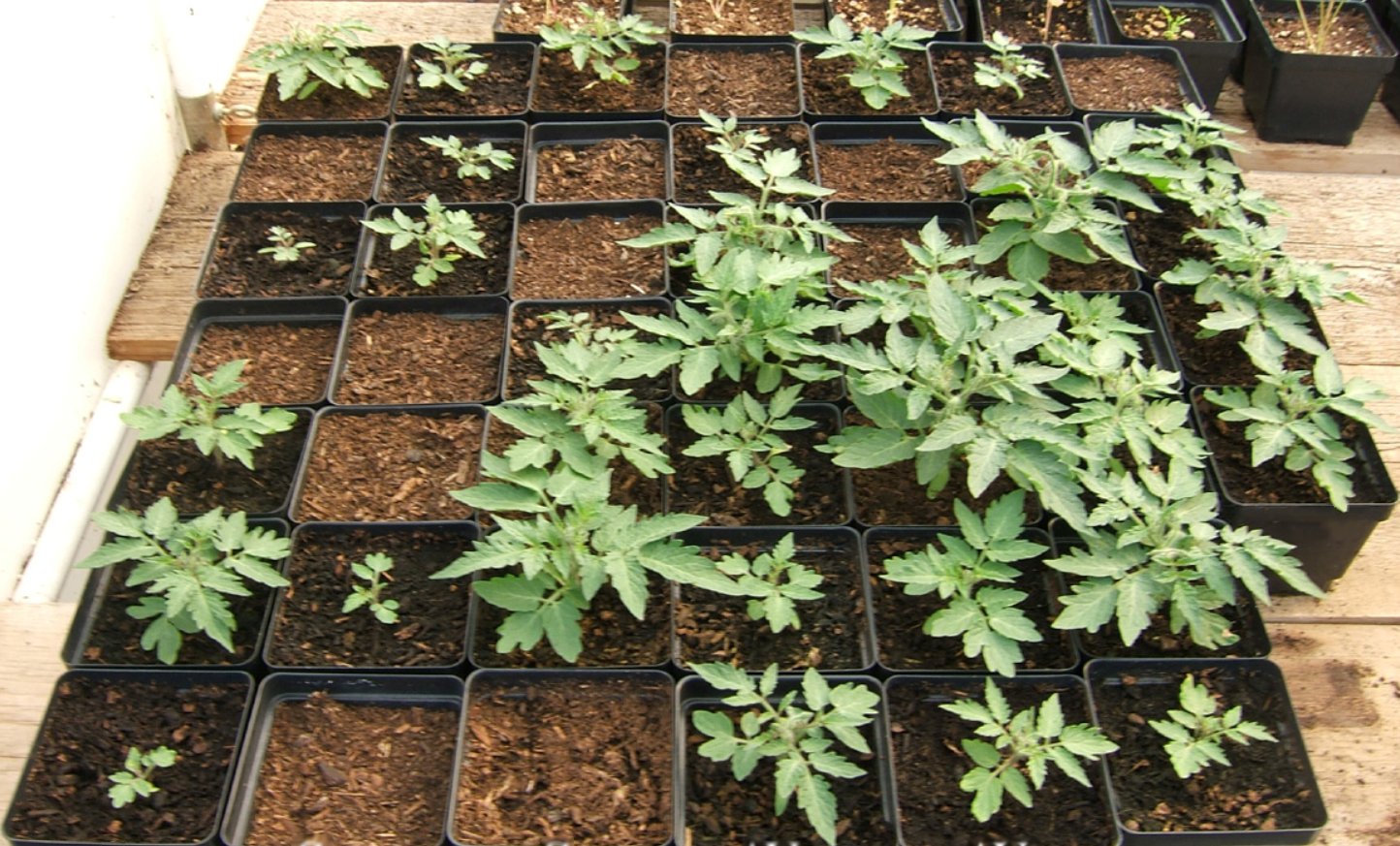
This photo was taken 37 days
after seed planting and just before the application of the foliar spray
treatment.
Note the number of surviving Sea-Crop treated plants on the right
compared
to the control group in the three rows on the left.
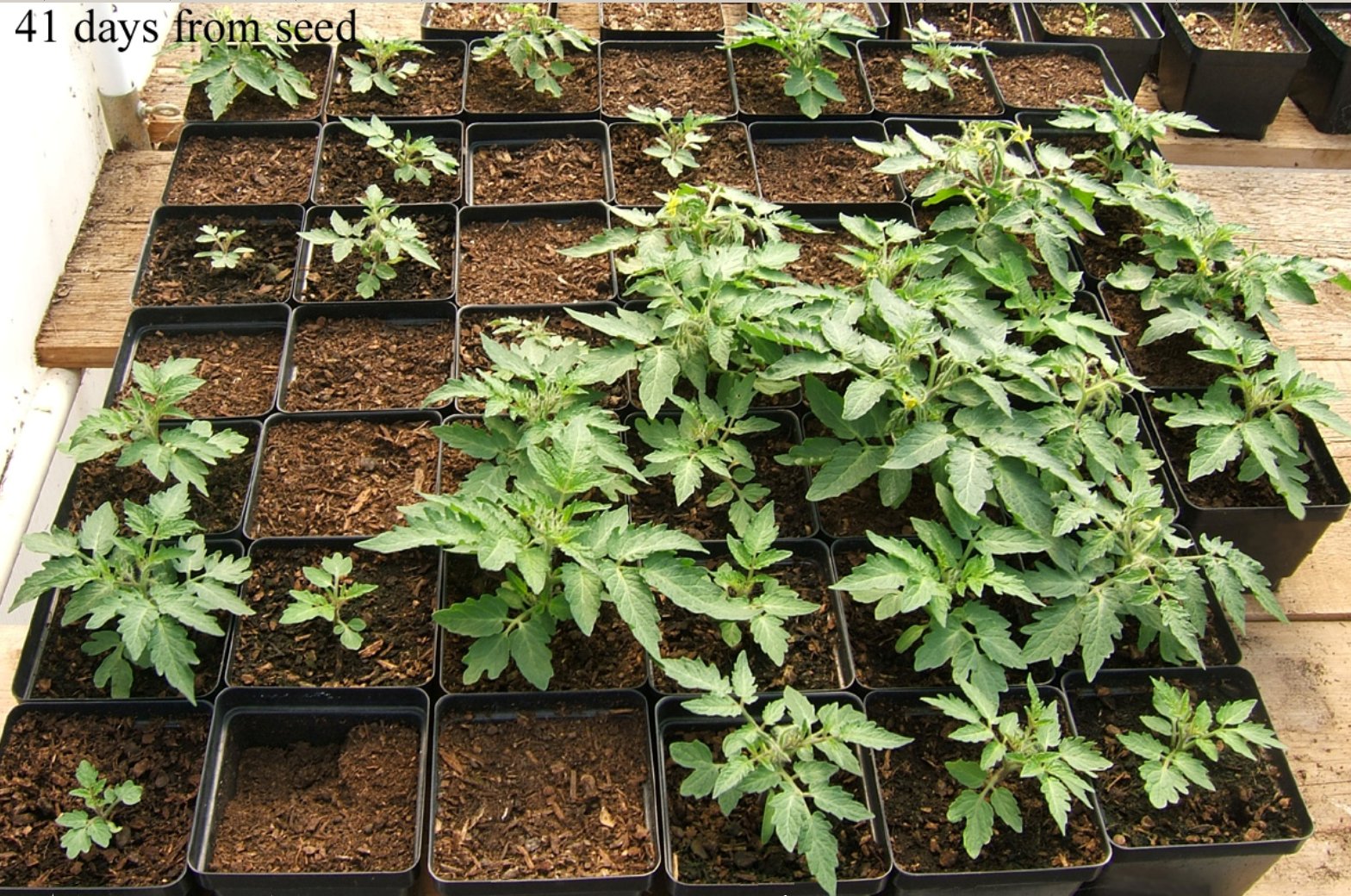
41 days after seed planting and 4 days
after foliar
treatment
The
results of
the final
harvest on
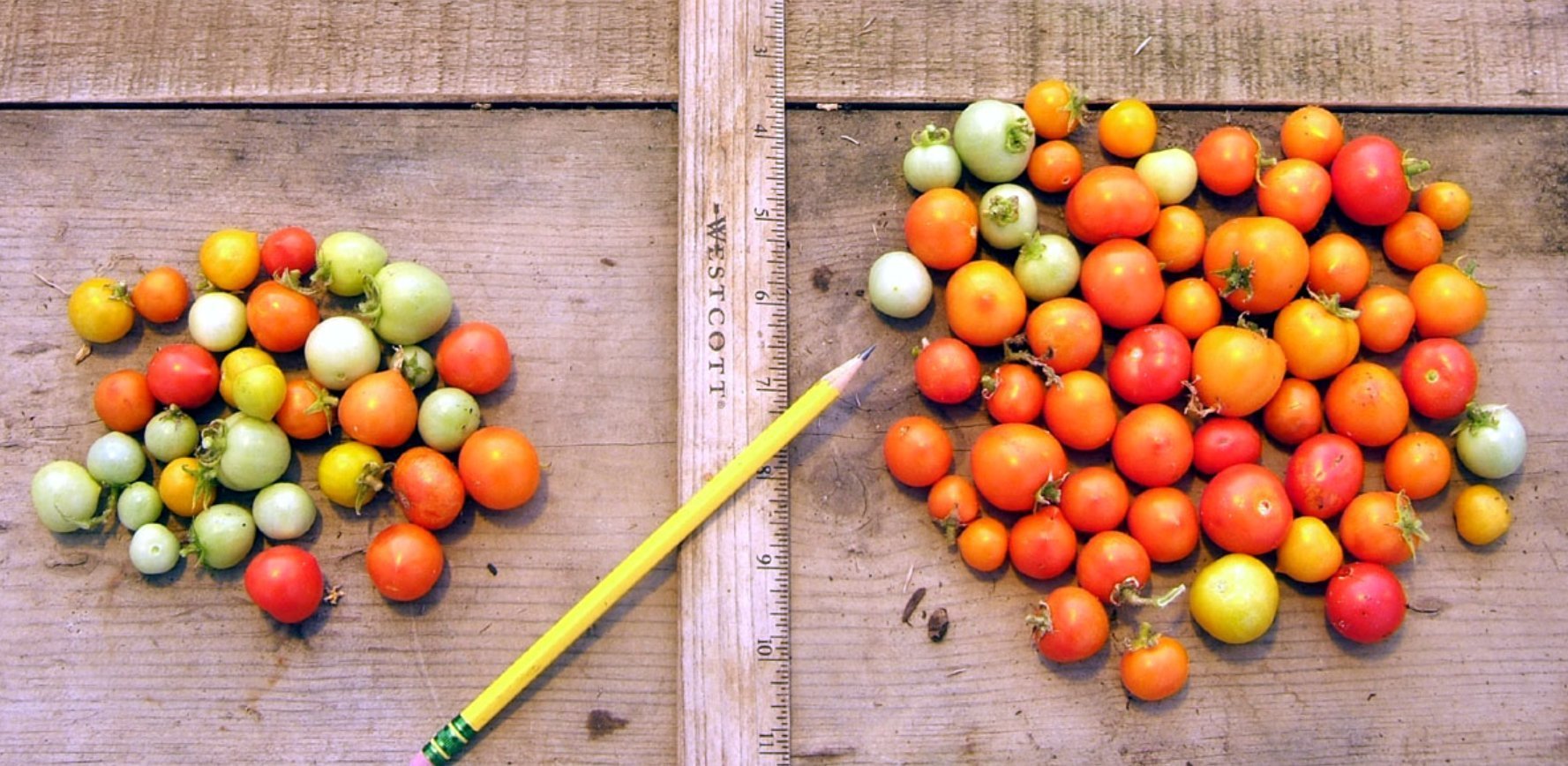
The fruit, each representative
of a group of eight plants, was counted and weighed.
The molasses only
control on the left yielded 31 tomatoes weighing 107.84 grams
while the molasses/Sea-Crop treatment on the right
yielded 57 Tomatoes weighing a total of 263.5 grams .
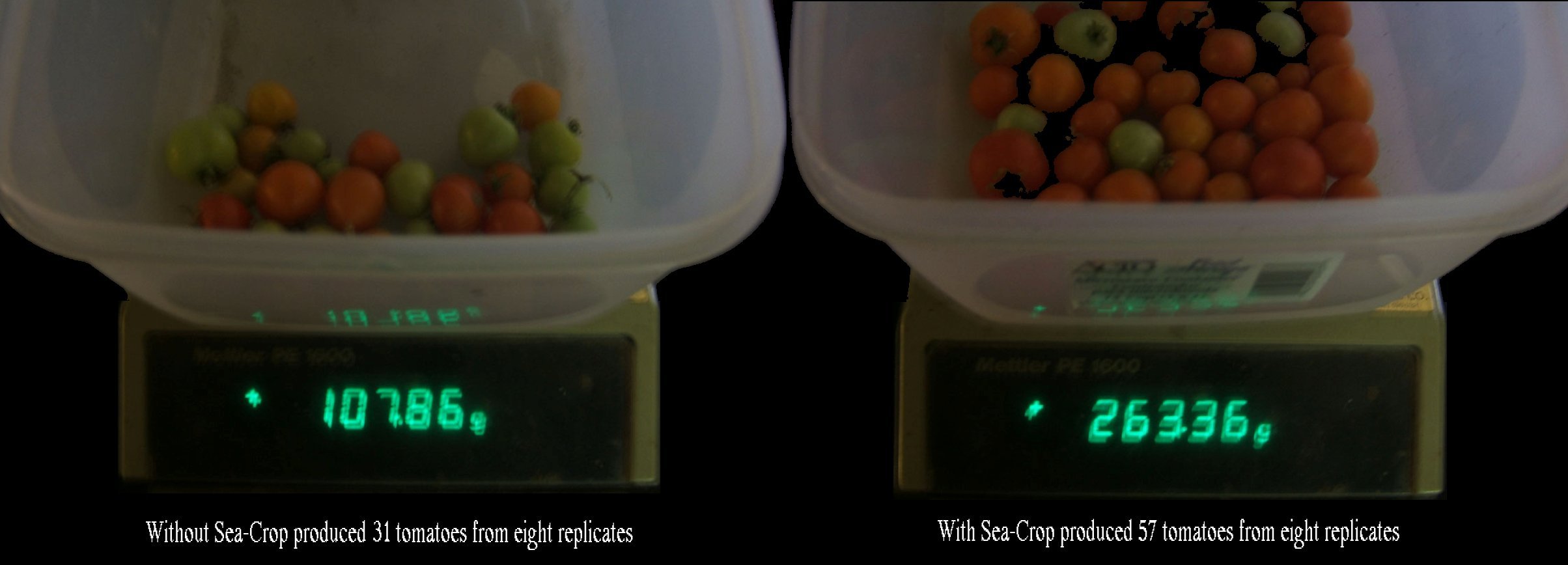
Tomatoes harvested from
eight representative plants with molasses fertilizer only are shown on
the left
and the tomatoes harvested from eight representative plants with
Sea-Crop plus
molasses fertilizer are shown on the right.
Both harvests took place on
From
this trial
it was
observed that Sea-Crop in a small dosage at seed planting benefited
seed
germination and early growth resulting in more tomato plants and healthier starts. The molasses fertilizer
applications by
itself benefited the control group but not to the extent that the
combination
of Sea-Crop and Molasses did.
Based
on other
experiments
with this variety, more fertilization than was provided by the molasses
would
have benefited both groups and most likely additional nitrogen
fertilizer in an
organic form at planting or at the initial fertilization would have
resulted in
even more effective growth. However, from a preliminary examination
additional
trials with Sea-Crop/molasses are recommended with different ratios of
the
blended products.
Additional
data
and photos
from root washing of the plants will be provided in the near future.